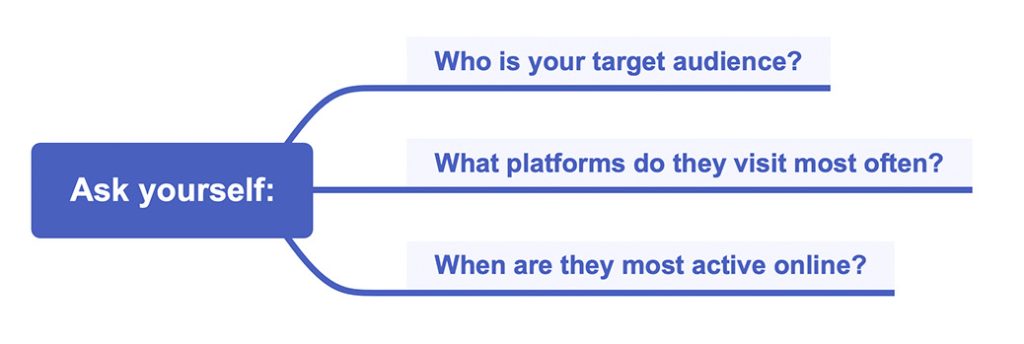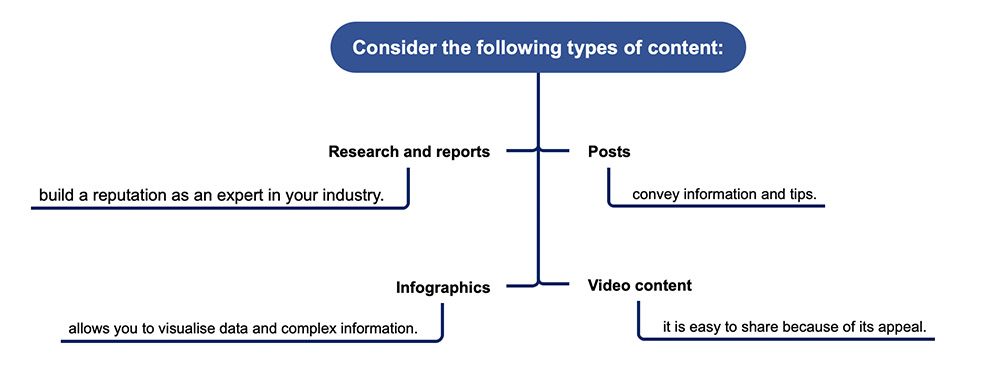In a digital world, every moment can be a valuable opportunity for brands. How do you capitalise on these moments? Media is constantly changing, and trends and user preferences are rapidly evolving. In this world where any post can go viral, successful audience engagement depends on planning and organisation. So, what makes a social media content calendar different from a helpful tool for marketers?

Imagine a calendar that not only reminds you of important dates but also serves as a bridge between spontaneous creativity and calculated strategy. It’s more than just scheduling posts; it serves as a roadmap for managing campaigns and evaluating strategies. How do you make the calendar work in your favour and not against you? What factors should you consider to maximise its effectiveness? How can you ensure each message reinforces your brand’s style and captures your audience’s attention?
In this article, we’ll examine why having a content calendar is crucial to your social media strategy and how creating and using one can revolutionise your approach to content planning. Ready to learn how to optimise your social media presence with content calendar planning?
Evaluate current content and its effectiveness
Before you start planning, it’s crucial to conduct an audit of your existing posts. This will help you understand which ones have resonated and which ones have not generated the expected engagement. To get started, answer the following questions:
- Which posts generated engagement?
- What topics resonated most with your audience?
- Which platforms attracted traffic?
Analyse a few months’ data to identify successful strategies and topics worth continuing. Use social media analysis tools to gather data and visualise results to gauge successes and failures.
Analysis of target audience and platforms
Understanding who your target audience is and where they spend most of their time online is critical to content creation.

The answers to these questions will help you determine what type of content to create and which platforms to target for distribution. Understanding audience demographics and preferences will ensure accurate targeting of marketing campaigns.
Defining goals and objectives
To ensure that your content calendar goes beyond a schedule of posts and becomes a tool for achieving business goals, you need to align it with your overall strategy. Be sure to consider the questions:
- What business goals do you want to achieve with social media?
- How can social media content support these goals?
The calendar’s purpose is not to maintain regularity but to increase brand engagement and achieve specific business metrics with each post.
Setting SMART goals
To make goals achievable, they must be Specific, Measurable, Attainable, Relevant and Time-bound (SMART). Take this approach when setting goals for your calendar:
- Specificity: Define what you want to achieve.
- Measurability: Criteria for tracking progress and success.
- Achievable: Make sure the goals are realistic.
- Relevance: Make sure the goals align with your mission and vision.
- Timeframe: Setting deadlines for achieving the goals.
With SMART goals, you can focus your efforts and increase your chances of success. Each entry in your calendar should contribute to your goals, whether increasing brand awareness, driving traffic to your website, or promoting a product.
Plan content types
Your content calendar should feature a variety of formats that grab attention and engage your audience. Consider the following types of content:
- Posts: Convey information and tips.
- Video content: It is easy to share because of its appeal.
- Infographics: Allows you to visualise data and complex information.
- Research and reports: Build a reputation as an expert in your industry.

The importance of balancing sales-promoting content with informational content
For balance in your calendar, it’s important to alternate between sales-promoting content and content that informs, educates and entertains.
- Sales content: Offers, promotions, product presentations.
- Informational content: Training materials, articles on industry trends, behind-the-scenes publications.
Finding a balance is essential to attracting customers and retaining their attention, as it allows you to build a strong connection with your brand.
Publication Schedule
Optimal publishing time for different platforms
Determining when to publish posts is critical to increasing recognition and engagement. Research shows that publishing time is essential in reaching your target audience.
- Use platform analytics to determine when your audience is most active.
- Experiment with time slots to choose the optimal time to publish.
Ratio of post frequency to audience engagement
The frequency of posts should match your audience’s expectations and behaviour:
- Regularity: Maintain a consistent frequency of posts so your audience knows when to expect new content.
- Quality vs. Quantity: Focus on creating valuable content rather than the number of posts.
A well-balanced schedule will not only help to maintain engagement. It will also prevent audience fatigue from too many messages.
Using templates and tools
Automating the planning process can significantly improve efficiency. Reduce time spent managing media. Let’s take a look at some tools:
- Planning platforms such as Hootsuite or Buffer allow you to schedule posts across multiple platforms.
- You can use analytics tools such as Google Analytics or inbuilt social media analytics tools to measure the impact of posts on your audience. These tools will provide insight into the effectiveness of the content.

Using calendar templates can significantly help in organising your posts. Platforms such as Excel or Google Sheets offer templates that are easily customisable to suit your brand’s needs. This ensures ease of use and efficient organisation.
Additionally, project management tools such as Trello or Asana allow you to visualise your plan and track it effectively. Using these tools will allow you to maintain a structured content strategy that is easily accessible for collaboration and quick adaptation to any changes in the plan.
Methods of tracking post performance
To understand how effective your content strategy is, it’s important to track the performance metrics of your posts. Here are a few methods to help you do this:
- Engagement monitoring: Study likes, comments and reposts to gauge how much your audience is interacting with your content.
- Traffic analysis: Use UTM tags to track visits to your website from social media.
- Conversions: Set goals in Google Analytics to see which posts lead to desired actions, such as purchases or subscriptions.
Final thoughts
Creating a social media content calendar goes beyond the organisation; it requires attention to detail, an understanding of your audience and the ability to respond quickly to changes in the landscape. Now that you understand how to make and use a social media content calendar, it’s time to take action by following these steps:

Remember, a calendar is not static. It should constantly evolve to keep up with changes in your business and the social environment around it. Use this tool to stay organised, focused and one step ahead of the competition.
